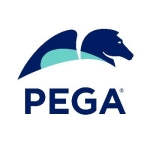The use cases for UiPath are mostly based on SAP products, web applications, and APIs.
UiPath is a tool which is mostly used for process automation. It's not like a normal automation tool. We have different kinds of process automation tools in the market. UiPath provides the best integration between multiple applications. It has supportive technology for all kinds of applications. It supports all kinds of products like desktop products and web applications.
So, integration is the best feature of UiPath. UiPath provides attended and unattended robots to do automation. It provides a use case for scanning invoice processing. So, these are some of the useful features provided by UiPath.
UiPath is currently lacking a Citrix environment, mostly on remote desktop applications. The banking sector is more concerned about security. To open an application, we need to enter some token authorization. Such kinds of processes or technologies need to improve in UiPath.
I have been using UiPath for three to four years.
When we face technical or product issues, we raise a ticket to UiPath support and get technical assistance from Uipath regarding the products and services.
Before UiPath, I used an automation tool called QTP/UFT tool.
The solution's initial deployment is easy, and it's not that difficult.
For the solution's on-prem initial deployment, we need the license and installation of the Orchestrator and the robotics machine.
Since it's a single-contribution project, I did the solution's development, deployment, and post-deployment support all by myself.
UiPath has helped streamline most standard processes, and it has also made the rule-based decision-making process stable. The solution helps us save a lot of time and manual effort. It has improved the accuracy and speed of processes like approving tasks, processing tickets, or the expenses of the employees. Most things that were very slow when done manually have become very fast nowadays with UiPath.
Comparatively, UiPath's pricing is higher than other tools. Since it provides the best services compared to other tools, UiPath's pricing is reasonable. Nowadays, they also provide cloud robots that don't require any infrastructure in our organization.
UiPath is a very easy-to-use and scriptless tool. Since it doesn't have any code involved in it, any nontechnical person can also use it for their professional work. They can automate any kind of workflow as per the business knowledge. UiPath doesn't require much technical knowledge and is very easy to use.
In most service-based or manufacturing organizations, UiPath can be used for processes that deal with a good cause. In the service-based organization, it provides employee benefit services like the recruiting process and retirement process. The solution also does monitoring tasks like license validation.
If you talk about social services, the solution also helps with passport scanning, which mostly happens in the airport. With the help of UiPath, we can immediately scan the passport and get the required information from a security point of view. So, it provides all kinds of the most relevant use cases in real life.
In UiPath, multiple stages are involved, like requirement gathering, business analysis, preparation of the process design documents, implementation of the perfect automation, and then deployment of that automation. After the deployment, we provide post-deployment support to the end users. This end-to-end process involves all kinds of stages, from requirement gathering to production and deployment. So, UiPath provides end-to-end automation.
UiPath provides a trial version of 60 days, which is the community edition and is completely free to use to learn. They have their own academies to learn the courses, which are also completely free. It also provides a certification of UiPath as a developer. UiPath has the best forum community edition where you can raise your questions and immediately get support or answers from the community. UiPath's user community is very user-friendly.
With UiPath, we have reduced a lot of manual work and saved a lot of time. It helped us reduce the most complex activities involved in the finance and HR departments.
I have used UiPath Academy courses and completed my certification program as a UiPath developer. Since UiPath is a scriptless tool, any user can learn the tool very easily by using the UiPath Academy courses. UiPath Academy courses are completely free. They don't have any charges and provide all the practical sessions and environment.
The UiPath Studio is also available for a 60-day trial version. You can install this tool on your machine, practice, and become an RPA or UiPath developer. So, UiPath Academy is the best tool to learn the UiPath tool.
Currently, UiPath has a lot of things like machine learning, artificial intelligence, and natural language processing. We have integrated all these things with UiPath. We also have AI Fabric in UiPath. By using AI, we can automate the more complex processes where decision-making is involved. The solution's AI functionality is mostly used in invoice processing or approving budgets.
UiPath's AI functionality has enabled us to automate more processes overall. AI gives us more leverage on process automation by reducing manual work and saving a lot of time in complex situations where decision-making is more complex. Based on historical data and previous experience, our UiPath bots can learn many things and give the best solution in AI.
UiPath gives more features to digitize your current business from manual to automation. It also saves lots of manual costs and real-time employee costs.
Although not 100%, UiPath reduces human error and provides more accurate results. It is very fast in terms of processing, and we can automate any kind of process. It works 24/7, even on weekends and holidays.
UiPath helps us to reduce or avoid some manual, repetitive tasks that most of our employees do on a daily basis. We have automated such tasks, and it saves a lot of employee time. So, employees can contribute their time to new innovations, new tasks, or new projects.
Nowadays, time is money. With UiPath, we save a lot of time and money in real-time employees.
RPA has multiple automation tools like Blue Prism, Automation Anywhere, and UiPath. We chose UiPath in our organization because it has more features than other tools.
I was involved in setting up the infrastructure for my current project. I was involved in the installation of the robots, the installation of the Studio, the connection between the Orchestrator and the Studio, and the deployment of the robots on the machine. I was involved in such activities, apart from the development.
Overall, I rate UiPath a nine out of ten.






















